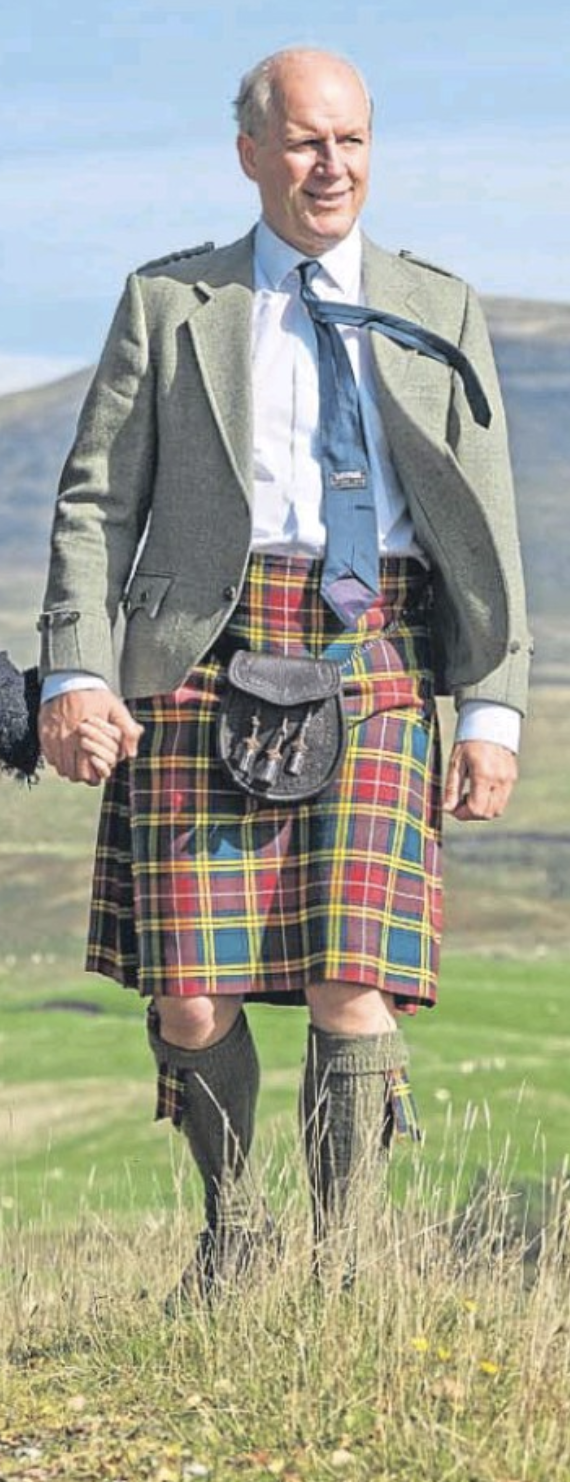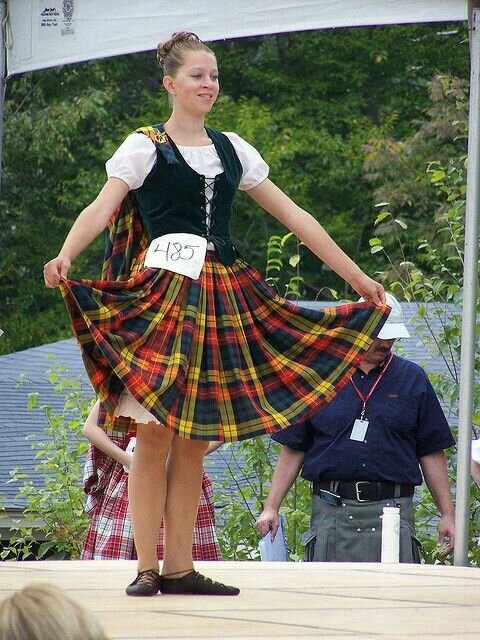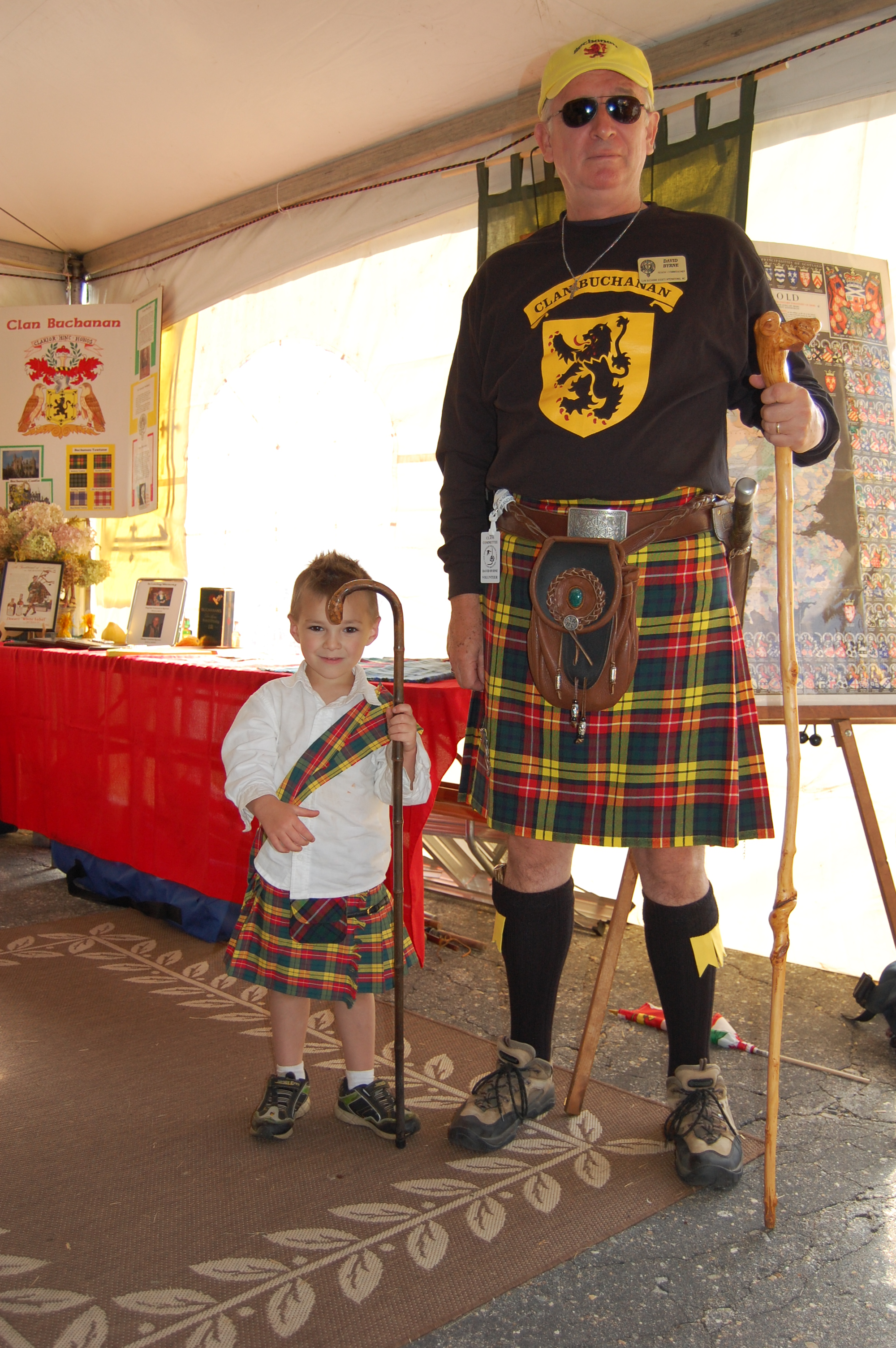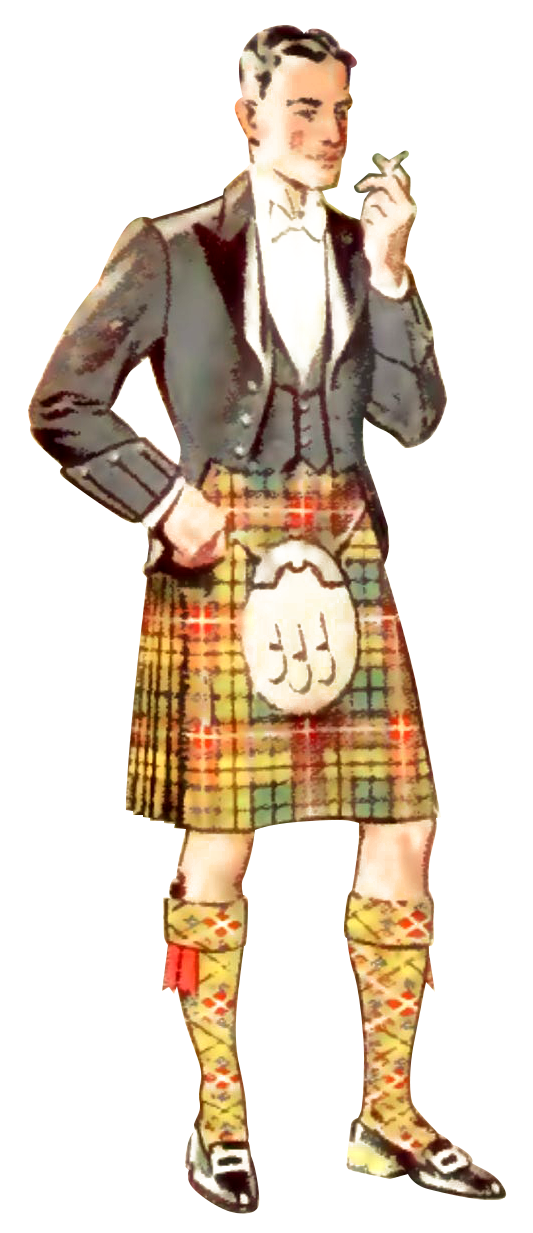A Brief History of the Kilt
Think ‘Scotland’ and you probably imagine three things: haggis, bagpipes and kilts.
While these are stereotypes undoubtedly form part of the nation’s identity and history, the most prominent has to be the kilt - a standard item of Highland Dress.
A ‘true Scotsman’ wears his kilt with pride and honour as it embodies his heritage and tradition. Worn at weddings, christenings and military parades alike, this icon of Scottish clothing endures to this day.
The kilt is the traditional dress of men and boys in the Scottish Highlands in the 16th century is a skirt-type garment with pleats at the rear.
Since the 19th century, the kilt has become associated with the wider Scottish and Gaelic cultures - often made of a woollen cloth in a tartan pattern.
In Scotland, kilts are usually worn at formal events as well in competitions such as Highland Games that take place in an array of islands, towns, villages and cities across Scotland and far afield in many parts of the World.
Competitions in the Scottish summer include heavy athletics, dancing, track and field, pipe bands and music tournaments are held every weekend.
The kilt has recently been adapted into an item of contemporary fashion wear, highlighting the versatility of this age-old item of clothing.
Origin
Kilts are recognised the world over as the Scottish national dress, a symbol of patriotism and national identity, they have deep-seated cultural and historical roots.
Across the globe, Scottish people proudly sport kilts as a tribute to their heritage, yet, this wasn’t always the case. For many years, to the Highlanders, the kilt was widely considered the garb of savages. The Lowlanders, who make up the majority of Scots, regarded this form of apparel as barbarous and they viewed those who wore it with contempt and loathing, labelling them with the derogatory term: ‘redshanks’.
The word ‘kilt’ dates back to the Scots would ‘kilt’, which means “to tuck clothes around the body”.
How did the Kilt evolve?
The kilt, like most clothing, has undergone a process of evolution over the centuries. Starting life as the ‘great kilt’, the kilt we recognise today (the small kilt) has its roots in the late 1600s.
The Belted Plaid - The great kilt
At the end of the 16th century, the kilt first appeared as the belted plaid (Breacan an Fhéilidh) or great kilt (Feileadh Mòr): a full-length garment whose upper half could be worn as a cloak draped over the shoulder or brought over the head as a hood.
Owing to the inclement weather and treacherous terrain of the Scottish Highlands, the belted plaid had many advantages.
It was warm, it allowed freedom of movement, the upper half served as a cloak against the weather, it dried quickly so providing adequate over-night blanketing.
The belted plaid or the breacan-an-feileadh (pr: BRE-kan an Feelay) . . . the great kilt, appears to have been the characteristic dress of the Highlander from the late sixteenth century onwards and had probably been worn for quite some time before the over the saffron tunic (shirt).
It was a loose garment made up of around six ells (18 feet / 5 metres) of double tartan - Highland looms could only weave a maximum width of 25 to 30 inches (65 - 75 cm) so two lengths had to be sewn together down their long edge to make the plaid (from 'pladjer' - the Gaelic for blanket).
Historians have presented the idea that the Highlander laid this great expanse of fabric onto the ground and carefully folded it into pleats until its length was reduced to about 5 feet (1.5m).
He then lay down on his back on top of it so that the bottom edge almost reached to his knees and gathered it around himself, securing it round his waist by a leather belt.
He would then stand up and arrange the unpleated top portion around his shoulders, tucking the corners into his belt to form ingenious pockets.
The procedure may well have been normal in the larger homes of the 'upper classes' of the times, but hardly the norm for the average Highlander living in a tiny black house, often shared with his cattle. The practical truth, based on common sense and a reasonable amount of documented evidence, tells us that on the inside of the plaid there was a series of loops, through which was threaded a cord.
The Little Kilt / Small Kilt (Feileadh-beag)
The beginnings of the small kilt - the one which is worn in modern times - has caused lots of arguments over the years.
There are many people who like to think that something so Scottish has to be really ancient but it is generally agreed that the little kilt is really quite modern having first become popular about 270 years ago.
One of the commonest tales is that it came about in the 1730s at an ironworks at Glengarry in Argyll.
The manager there was an Englishman called Thomas Rawlinson who wore the kilt himself and noticed the inconvenience of being unable to remove the top half when it became soaking wet with rain, without having to take the bottom part off as well.
So he separated the top half and got a tailor to sew the pleats permanently into the bottom half. The Chief of Glengarry - Iain MacDonell - saw this, thought it a great idea and copied it.
There are of course other explanations and the truth of the matter probably is that the small kilt developed in various places over a period of years but no-one thought to document its evolution - apart from in the case of Thomas Rawlinson.
The knee-length tartan kilt we are familiar with today closely resembles the small kilt or walking kilt, which did not develop until the late 17th or early 18th century.
The bottom half of a great kilt, the small kilt or walking kilt (fèileadh beag) became popular in the Highlands and northern Lowlands by 1746, although the great kilt (or belted plaid) continued to be worn.
The small kilt was adopted by the Highland regiment of the British Army, the military kilt then passed into civilian usage and has remained popular ever since.
On the grounds of efficiency and practicality, he designed a kilt, comprising the lower half of the belted plaid, to act as a distinct garment with pleats already sewn, so became the small kilt or walking kilt.
The tartan skirt-like garment soon became a fashion hit.
Rawlinson's kilt is the earliest documented example of a small kilt with sewn-in pleats, which are a distinctive feature of today’s kilt. There is some evidence to suggest that the kilt was in use before Rawlinson’s time, however with any example of history, the accounts of who invented the iconic symbol of Scotland is inconsistent.
Highlanders were out in all sorts of weather, bare legged and frequently bare-footed and one of the names given to them was Redshankes – shanks is an old word for legs and the red legs were caused by exposure to the winds, rains and snows of the Highlands.
In 1688 the Governor of the Isle of Man wrote a description of Highlanders: "Their thighs are bare, with brawny muscles. . . a thin brogue on the foot, a short buskin of various colours on the leg, tied above the calf with a striped pair of garters. What should be concealed is hid with a large shot-pouch, on each side of which hangs a pistol and a dagger. A round target on their backs, a blew bonnet on their heads, and in one hand a broad sword and a musket in the other."
As mentioned above, the spare fabric of the upper portion would be arranged in ingenious folds for pockets to hold provisions and other multifarious objects.
In times of battle, we read that Highlanders would discard the cumbersome plaid leaving them stark naked from the waist down: many's the enemy who must have fled in terror before a Highland charge that displayed such awesome weaponry.
The Dress Act 1746
In 1746, not long after the kilt’s invention, all items of Highland Dress, including the kilt, were outlawed by the Dress Act (or Diskilting Act).
In the wake of the Jacobite Uprising, to avoid the bloody battles of the past, the act was passed in an attempt to suppress Highland culture and bring warrior clans under government control.
An exception was made for the Highland Regiments of the British Army - each of which was given different tartans so they could be identified.
Anyone who defied the ban was sentenced to six months’ imprisonment for their first offence.
For their second, they were to be transported to any of His Majesty’s plantations beyond the sea, there to remain for the space of seven years.’
During the ban, Scottish romantics wore kilts as a form of protest.
Repeal of 1782
In 1782, thanks to the efforts of the Highland Society of London, the Diskilting Act was repealed. By that time, kilts and tartans were no longer ordinary Highland wear, paving the way for new interpretations of Highland Dress.
With this, a new persona of the Highlander was conceived. No longer bare-legged, dangerous barbarians, they became admirable, kilted versions of the ‘noble savage’.
Types of kilts
We are aware of kilts for their vibrant tartan designs, none more so than Clan Buchanan’s Modern tartan. But throughout history, not everyone who wore one could afford such adorned patterns – Historically, Scottish clothes were worn depending on the wealth of the wearer and were either coloured in various check tartan designs or plain wool.
Many original wearers could not afford to purchase elaborate designs. After all, this Scottish traditional dress was a largely practical form of clothing (not ceremonial as it is today).
Traditional Scottish kilts are made from worsted wool with a twill structure. This creates a distinctive diagonal-weave pattern in the fabric. When woven in a particular sett or colour pattern is called tartan.
Underwear – yes or no?
It is often said “a true Scotsman’ wears nothing under his kilt”.
Recently a journalist wrote - ‘the reason is that it is very warm and cosy swathed in all that pure wool. If anything, it gets too hot down there. Underpants would just be – well, sticky.’
However the Scottish Tartans Authority, argues that the practise could be seen as ‘childish and unhygienic’ and that ‘going commando’ flies in the face of decency.”
Kilts Today
Now men wear kilts as an alternative to trousers at formal events like weddings, christenings, and graduations and fashion versions of the garment available for women in mini-skirt form.
Kilts are especially worn at Hogmanay (Scottish New Year) and the Highland Games. The Kilt is a long-standing and much-respected emblem of Scotland. Therefore, it’s only right that such a rich history is remembered and celebrated.









